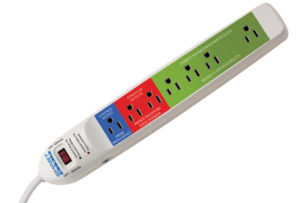
 It’s estimated that 26 million Americans are affected by asthma or asthma-related conditions. It’s proven that these attacks have a direct link to air quality — and air sealing your home can help.
It’s estimated that 26 million Americans are affected by asthma or asthma-related conditions. It’s proven that these attacks have a direct link to air quality — and air sealing your home can help.
In the lungs of asthma sufferers, swollen airways become extra sensitive when the individual is exposed to asthma triggers such as pollen, smoke, pet dander, dust, mold, chemicals in the air and more. To make things worse, an American Lung Association study indicated too many people in the United States live in areas where the air is unhealthy for them to breathe.
Sealing a home’s air leaks can help improve indoor air quality by lowering the number of asthma triggers that can enter the inside of a home or building.
Spray foam insulation is a great option to both insulate and seal air leaks in one step. In fact, one of the key benefits of spray foam is improved indoor air quality. The material provides an exceptional air seal, works as a thermal barrier (insulator) and helps control moisture issues. This improved air-tightness provides better control of indoor humidity, which reduces mold inside the home. It also dramatically reduces the number of pollutants that can enter the home (pollen, dust, etc.) and allows a home to have proper mechanical ventilation to filter the air and keep the interior air clean.
By reducing these asthma triggers, anyone affected by asthma or other breathing issues will benefit.
Contact us for an air sealing estimate today!


 Ventilation is an important topic is the world of energy-efficient homebuilding. With the increase in green building techniques and tighter building envelopes comes an increased need for proper building ventilation.
Ventilation is an important topic is the world of energy-efficient homebuilding. With the increase in green building techniques and tighter building envelopes comes an increased need for proper building ventilation.
 For the second year in a row,
For the second year in a row, 
 When it comes to home improvement projects or building a new home, it’s hard to know you’re choosing the best contractor for your job. How do you know the company is reputable and will be there to handle a problem that could come up down the road? Can you trust them to show up on the day the work is to be performed?
When it comes to home improvement projects or building a new home, it’s hard to know you’re choosing the best contractor for your job. How do you know the company is reputable and will be there to handle a problem that could come up down the road? Can you trust them to show up on the day the work is to be performed?
 Since building codes change over time and insulation product can settle, your attic may be under insulated. This means you may be spending more money on energy bills than is necessary.
Since building codes change over time and insulation product can settle, your attic may be under insulated. This means you may be spending more money on energy bills than is necessary.
 Smart Power Strips
Smart Power Strips
 It may seem obvious that your home’s attic needs insulation. But do you really know why it matters? Here are three reasons to upgrade your attic insulation and seal attic air leaks:
It may seem obvious that your home’s attic needs insulation. But do you really know why it matters? Here are three reasons to upgrade your attic insulation and seal attic air leaks:
 Why Spray Foam?
Why Spray Foam?
 Alabama is adopting the 2015 International Residential Code (IRC) with specific Alabama amendments. This code will go into effect October 1, 2016. All homes permitted prior to this date will still be subject to the current 2009 IECC requirements.
Alabama is adopting the 2015 International Residential Code (IRC) with specific Alabama amendments. This code will go into effect October 1, 2016. All homes permitted prior to this date will still be subject to the current 2009 IECC requirements.
 Do you or someone you love suffer from asthma or asthma-related attacks?
Do you or someone you love suffer from asthma or asthma-related attacks?